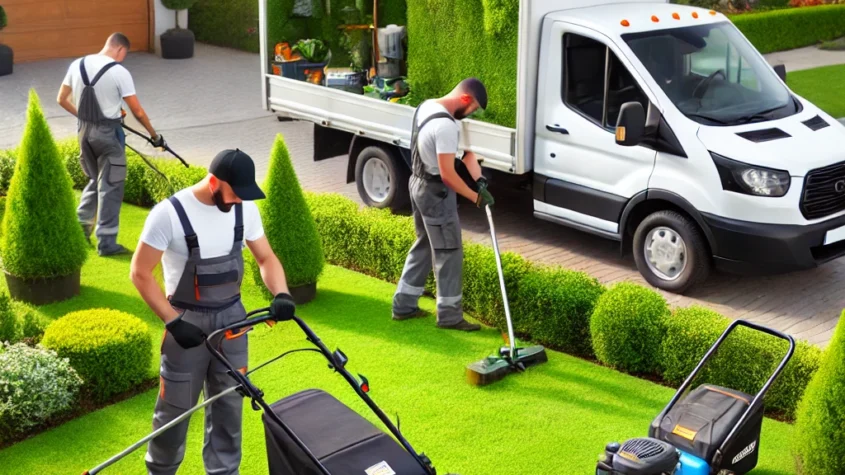
Landscape services encompass a wide range of activities designed to enhance outdoor spaces. From lawn care and gardening to hardscaping and maintenance, these services aim to create visually appealing and functional environments. Understanding the specific landscape services available can help homeowners make informed decisions that elevate their property’s appeal and utility.
Employing professional landscape services can save time and labor while ensuring a higher quality of work. Professionals possess the expertise and tools necessary to tackle projects efficiently, providing tailored solutions for unique spaces. This not only enhances aesthetics but can also increase property value.
Investing in landscape services can lead to a more enjoyable outdoor space for relaxation, entertainment, and family gatherings. Whether through seasonal clean-ups, planting, or design, these services play a crucial role in maintaining the beauty and health of yards and gardens.
Landscape Design Principles
Effective landscape design requires a blend of color, texture, and functional elements to create harmonious and practical outdoor spaces. Key principles focus on balancing natural and hardscape components while maximizing the usability and aesthetic appeal of the area.
Understanding Color and Texture
Color plays a crucial role in landscape design. It impacts mood, visibility, and the perception of space. Designers often use a color wheel to select complementary or analogous colors to create visual interest.
- Bold Colors: Bright hues attract attention and create focal points.
- Soft Tones: Pastel colors offer a more subdued atmosphere, promoting relaxation.
Texture is equally important. Combining various textures can add depth to a landscape. For example, smooth surfaces like stone can contrast with the roughness of bark or foliage. The interplay between these elements enhances overall visual appeal and engages visitors.
Incorporating Hardscape Elements
Hardscape elements provide structure and functionality to a landscape. These can include patios, pathways, retaining walls, and outdoor fixtures. Proper selection and placement of these elements create a balanced environment.
- Materials: Common choices include stone, brick, concrete, and wood. Each material offers unique aesthetics and durability.
- Functionality: Pathways should be practical and direct visitors efficiently. Patios should cater to the intended use, whether for dining, lounging, or entertaining.
Incorporating elements like water features or fire pits adds a dynamic aspect to the design, creating places for gathering and relaxation.
Maximizing Space with Smart Layouts
Efficient layout maximizes the usability of outdoor spaces. Designers analyze the area to create a flow that directs movement and highlights key areas.
- Zoning: Dividing the space into zones for different activities, such as dining, gardening, or play, allows for better organization.
- Proportions: Maintaining proper proportions prevents overcrowding. Using scale models can help visualize how various elements interact within the space.
Incorporating vertical elements, such as trellises or raised beds, can enhance usability without occupying additional ground space, promoting a well-organized and functional landscape.
Maintaining a Healthy Landscape
A healthy landscape requires careful attention to irrigation, soil fertility, and pest control. Each element plays a critical role in plant health and overall ecosystem balance.
Irrigation and Water Management
Effective irrigation ensures that plants receive adequate water without over-saturation. This balance is crucial for root development and drought resistance.
- Drip Irrigation: This method delivers water directly to the roots, promoting deep growth and reducing evaporation.
- Scheduling: Implementing a regular watering schedule during early morning or late afternoon maximizes absorption and minimizes waste.
Using soil moisture sensors can guide irrigation timing. It detects moisture levels, preventing under or over-watering.
Maintaining irrigation systems is essential. Regular checks help identify leaks or blockages that can disrupt water flow.
Soil Fertility and Plant Nutrition
Healthy soil is foundational for plant growth. The composition of soil influences nutrient availability and microbial life.
- Soil Testing: Conduct tests to determine pH, nutrient levels, and organic matter. Adjustments may include adding lime to raise pH or sulfur to lower it.
- Organic Matter: Incorporating compost or mulch enhances soil structure and nutrient richness.
Fertilizers should be used judiciously. Slow-release options prevent nutrient runoff and provide a steady supply.
Crop rotation and cover cropping can improve long-term soil health by reducing erosion and enhancing nutrient cycling.
Pest Control Strategies
Managing pests is vital to sustaining a healthy landscape. Integrated Pest Management (IPM) combines biological, cultural, and chemical methods.
- Monitoring: Regularly inspect plants for signs of pests or disease. Early detection is key to effective treatment.
- Natural Predators: Introducing beneficial insects can help control pest populations without chemicals.
When necessary, select pesticides that target specific pests while minimizing harm to beneficial organisms.
Education about pest lifecycle and behavior enhances control strategies. This proactive approach reduces reliance on reactive measures.
British Virgin Islands Company Registration Guide for Seamless Offshore Setup
Registering a company in the British Virgin Islands (BVI) is a straightforward process tha…









